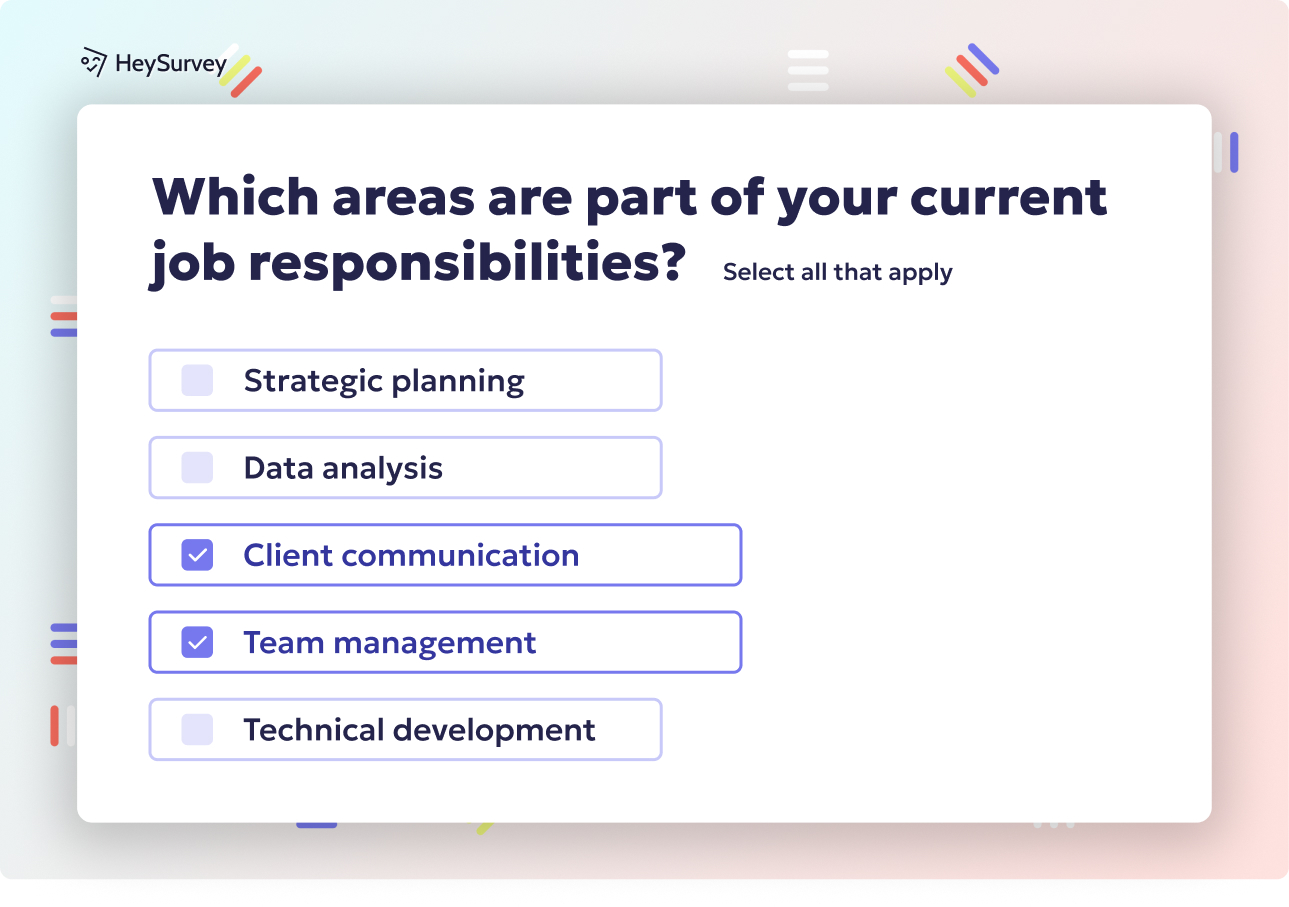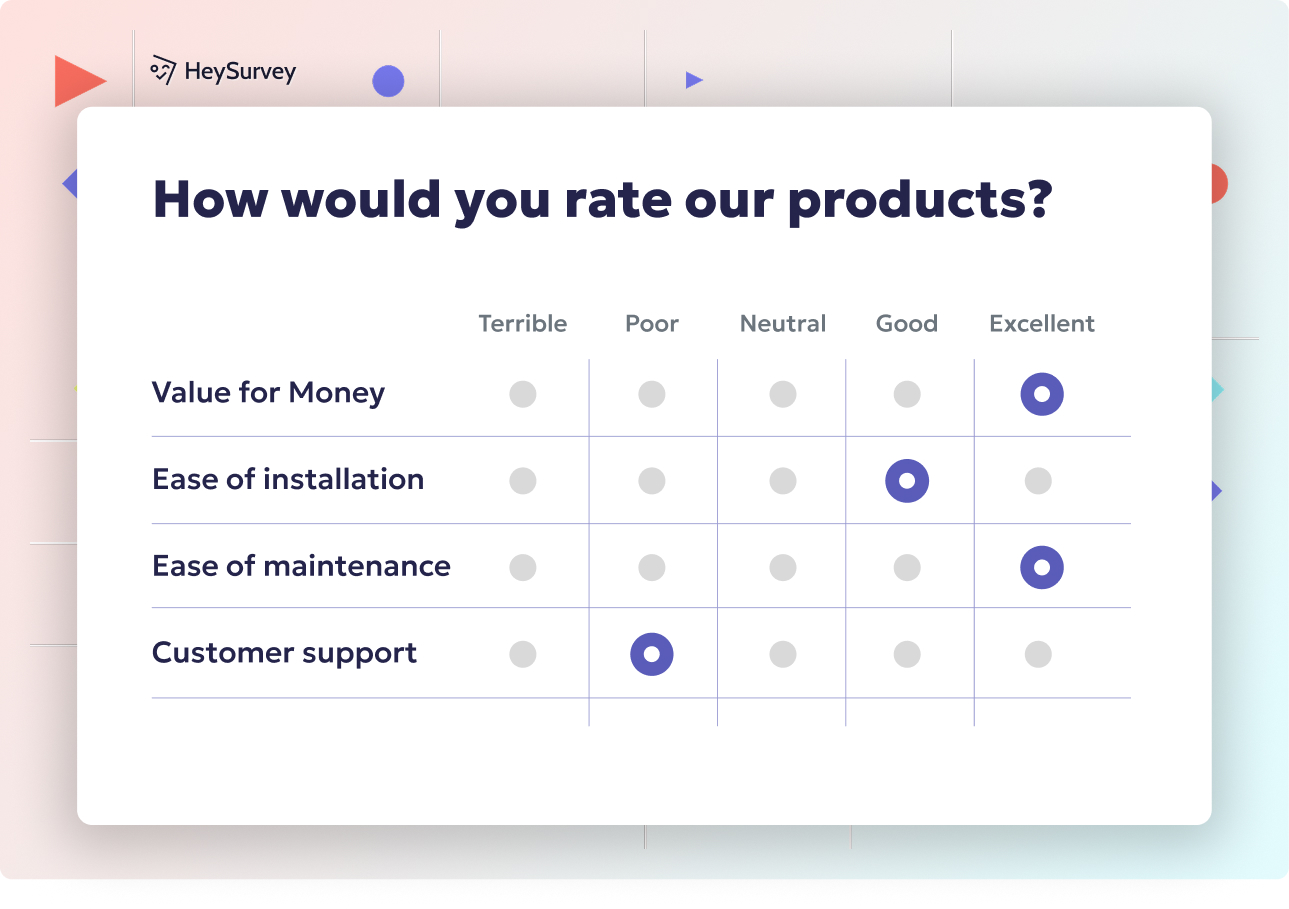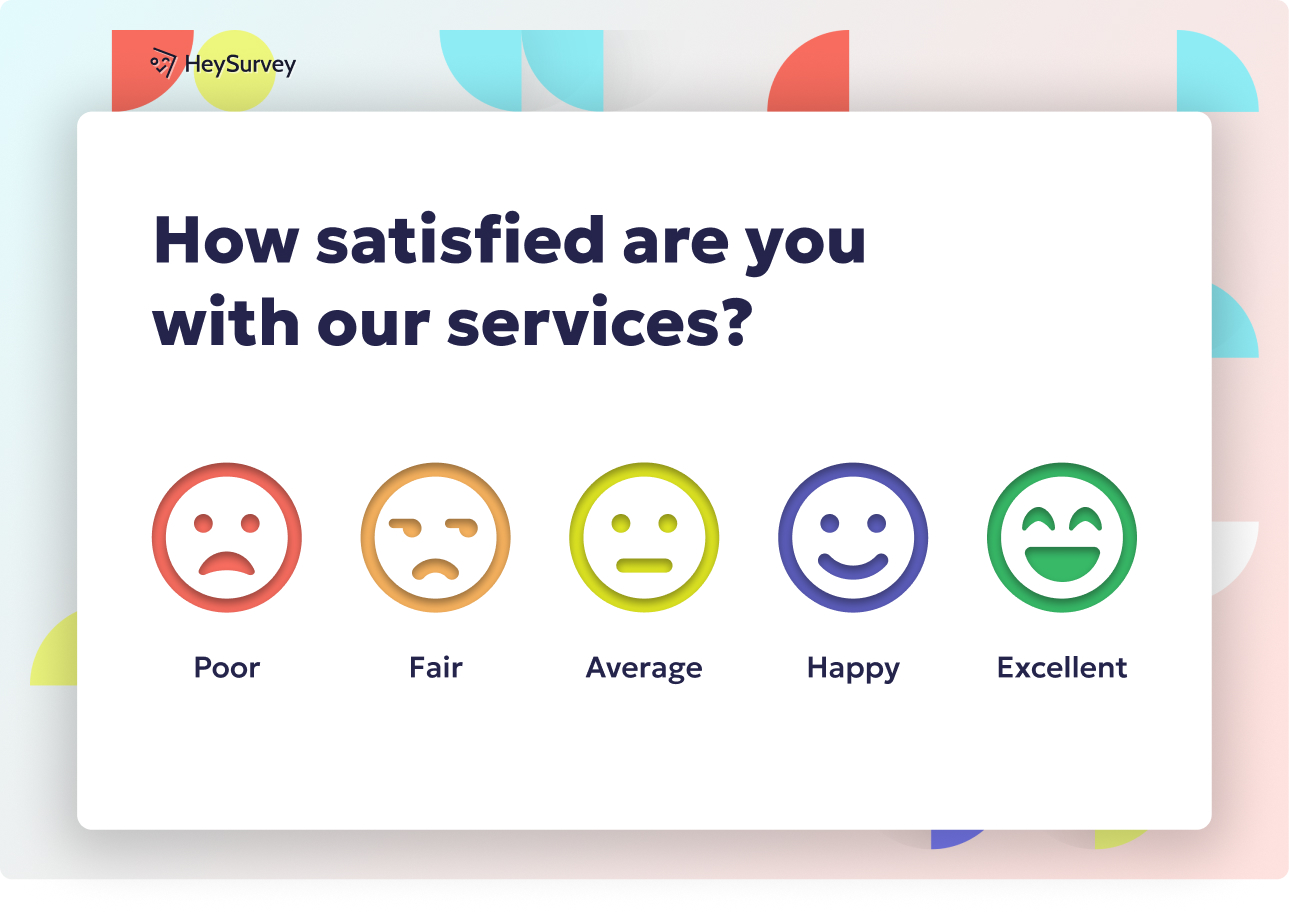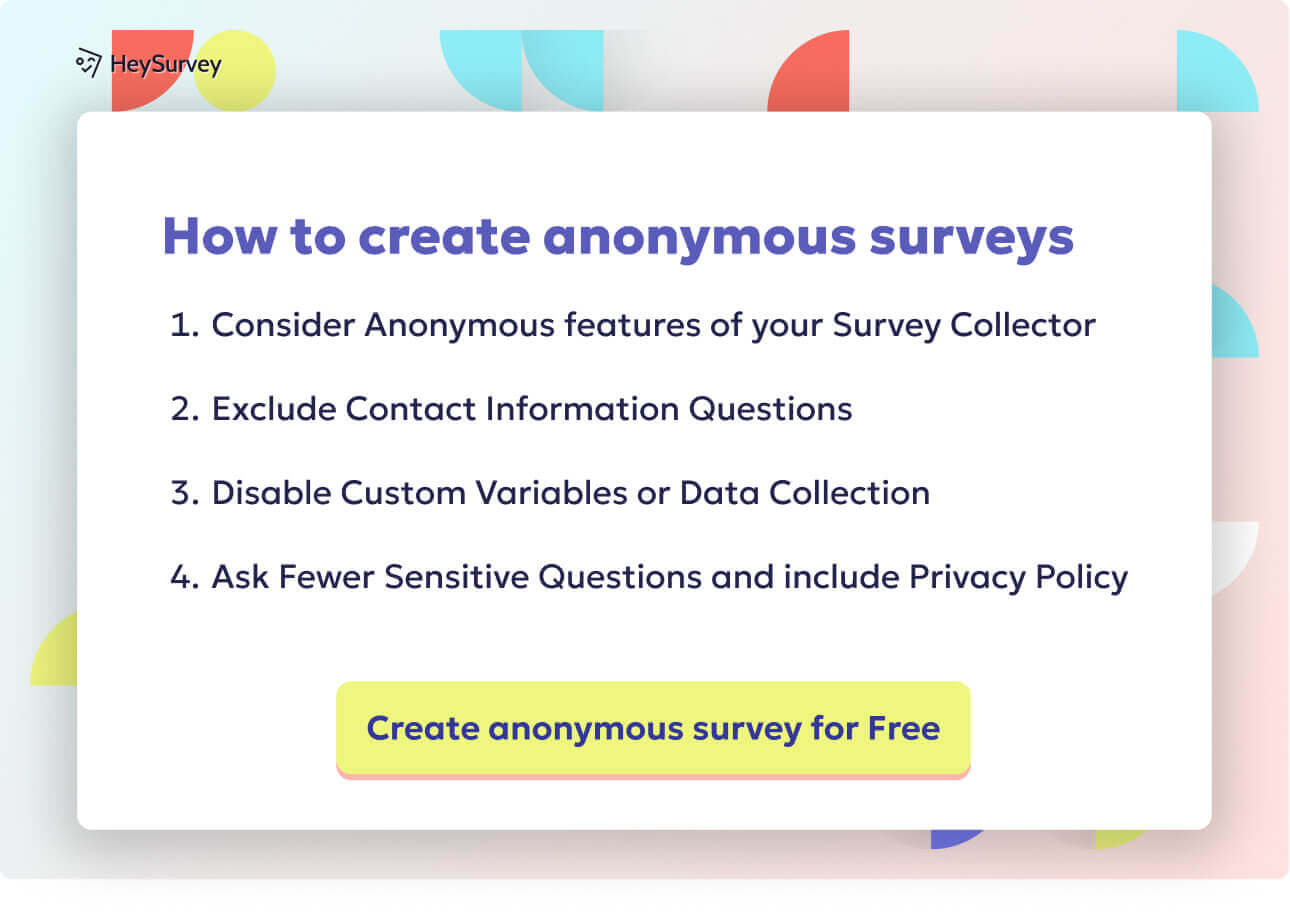31 Nonprofit Survey Questions to Boost Feedback & Impact
Discover 28 essential nonprofit survey questions with sample prompts to gather actionable feedback and drive mission success effectively.
When it comes to driving impact in the nonprofit sector, surveys are secretly your organization’s best friend. They aren’t just another task on the endless to-do list—they’re a fast, friendly way to boost donor retention, deepen volunteer engagement, sharpen program results, and foster trust. Most nonprofits deploy surveys at key moments: after inspiring events, annual reporting, following donations, or during those crucial strategic planning cycles. In this guide, we’ll walk through eight types of essential nonprofit surveys covering every major stakeholder. You’ll see how each one can light the way to smarter decisions, stronger relationships, and—let’s be honest—a happier, heartier mission.
Donor Feedback Surveys
The Power and Purpose of Donor Feedback
Donor feedback surveys are a secret weapon for any nonprofit looking to hold onto supporters for the long haul. You want your donors to feel like more than just wallets, right? These surveys help you understand what lights them up about your cause, which messages resonate, and what might send them packing. They’re best sent soon after a donation lands, at the end of the fiscal year, or fresh from a big campaign. With their answers, you can fine-tune your communications, set the stage for long-term loyalty, and maybe even get those all-important referrals.
Actionable Insights: Sample Questions
The key to a good donor survey is asking questions that get you both the warm fuzzies and hard numbers. Try using a mix of open-ended prompts to uncover motivations and closed-ended queries to easily spot trends. Here are five questions designed to surface the magic (and the maybes):
What inspired you to support our cause?
How satisfied are you with the updates you receive about the impact of your gift?
Which communication channel do you prefer for future updates (email, phone, social media, mail)?
How likely are you to donate again in the next 12 months? (0-10 scale)
What could we do to improve your donor experience?
With this feedback, you’ll see trends emerge: maybe donors want more impact stories, or perhaps a quarterly newsletter beats your monthly email. Either way, acting on these results builds trust and loyalty, keeping your supporters coming back.
Dos and Don’ts for Donor Surveys
- Keep it concise—long surveys kill the mood.
- Personalize your email invitations.
- Incentivize participation (think handwritten notes or a public thank-you).
- Don’t bombard supporters with too many requests—quality over quantity.
When you close the loop and show how donor voices shape your strategy, you make giving feel extra meaningful. And isn’t that what it’s all about?
Collecting donor feedback enhances donor retention by making supporters feel valued and involved in the organization's mission. (whydonate.com)

How to Create a Survey with HeySurvey in 3 Easy Steps
If you’re new to HeySurvey and want to whip up a great survey fast, here’s a simple, friendly walkthrough tailored just for you. Ready? Let’s dive in!
Step 1: Create a New Survey
- Go to HeySurvey’s homepage and either log in or start right away without an account.
- Click “Create Survey” and choose your starting point—either pick an empty sheet to build from scratch or select a pre-built template that fits your nonprofit’s needs.
- Give your survey an internal name (you can always change it later in the survey editor).
Step 2: Add Questions
- Use the “Add Question” button at the top or between existing questions to insert your queries.
- Choose from various question types like multiple choice, text input, scales, or dropdowns—whatever suits the feedback you want.
- Customize each question by typing the question text, adding descriptions or images, and marking questions as required if you want answers to be mandatory.
- Bonus: You can set branching so the next question depends on a respondent’s answer for a more personalized experience.
Step 3: Publish Your Survey
- Hit the “Preview” button to see exactly how your survey looks across devices.
- When you’re happy with it, click “Publish.” Note: You’ll need an account to publish and access live responses.
- Share the survey link anywhere—on your website, in emails, or social media—to start gathering feedback.
Bonus Steps to Make Your Survey Shine
Apply Branding
- Upload your nonprofit’s logo to the top-left corner for a professional, customized look everyone will recognize.
- Use the Designer Sidebar to tweak colors, fonts, backgrounds, and even animations to match your organization’s style.
Define Settings
- Set start and end dates so your survey is only open when you want it.
- Limit the number of responses if you’re running a small pilot.
- Add a redirect URL to guide respondents to a thank-you page or your website after submitting.
- Choose whether respondents can see survey results when they finish.
Skip Into Branches
- Use branching logic to send respondents to different questions or endings based on their answers—avoiding irrelevant questions and creating a smooth, custom journey.
- Define multiple endings with personalized messages or images depending on how participants answered.
Once your survey is published, dive into HeySurvey’s Results Page for easy-to-understand visuals, downloadable reports, and options to export or integrate data for deeper analysis. Ready to get started? Click the button below to jump into a template and create your first survey in minutes!
Volunteer Satisfaction Surveys
Why Volunteer Input Makes a Difference
Your volunteers are more than helpful hands—they’re passionate advocates driving your mission forward. Listening to what makes them tick is a shortcut to reducing turnover, enhancing training, and putting a big smile on your scheduling coordinator’s face. Volunteer surveys excel when distributed after major projects, at regular quarterly check-ins, or following orientation. When feedback is woven into how you support volunteers, engagement goes up, and so does organizational impact.
Five Volunteer Survey Gems
These questions strike a balance between practical improvements and heartfelt appreciation, both keys for happy volunteers. Dive into these tried-and-true prompts:
How meaningful do you find the tasks assigned to you?
Rate the effectiveness of our volunteer training.
Do you feel recognized for your contributions? Why or why not?
How convenient are the volunteer shifts offered?
What resources would help you serve more effectively?
Don’t be afraid to act on what you hear—whether that means free pizza on training days or creating more flexible service opportunities. Clear, quick changes let volunteers know you actually value their input.
Tips for Crafting Volunteer Surveys
- Use clear, upbeat language—nobody likes trick questions.
- Include at least one open-ended question.
- Always say thank you for participating.
- Segment by role or project for sharper insights.
When you boost volunteer satisfaction, everyone wins: more retention, stronger programs, and way more high-fives.
Implementing volunteer satisfaction surveys can significantly enhance volunteer retention by aligning organizational practices with volunteer motivations and needs. (en.wikipedia.org)
Beneficiary Impact Surveys
A Window Into Program Impact
Beneficiary feedback is where the magic meets the mission. These surveys are your backstage pass to understanding what’s truly working, what needs tweaking, and what real people actually need next. They shine brightest immediately after delivering a service, before and after longer programs, or as part of routine follow-ups for those you serve. Collecting this data also satisfies most grant-makers’ itch for accountability.
Top Questions to Measure Impact
Good beneficiary surveys are all about respectful listening and actionable clarity. Here are five foundation stones for insight-rich surveys:
What problem did our program help you solve?
On a scale of 1-5, how much has your quality of life improved?
Which program component was most valuable to you?
Were there any barriers to accessing our services?
What additional support would you like us to offer?
For best results, combine these with translation-friendly phrasing so that everyone’s voice can be heard—not just the loudest.
Making Beneficiary Feedback Work
- Offer multiple formats (paper, digital, phone) to widen reach.
- Make questions as jargon-free as possible.
- Keep it safe and anonymous if needed.
- Close the loop by sharing improvements publicly, if appropriate.
When you listen close, you uncover the true program impact—and you’ll find new ways to stretch every dollar, build trust, and fuel your mission with authentic stories.
Event Feedback Surveys
Turning Spectators Into Superfans
Events—galas, run-walks, panel nights—bring people together, but only insightful feedback will help you make the next one even better. Post-event surveys are your VIP pass to optimizing logistics, improving content, and turning casual attendees into lifelong advocates. Timing is everything—send out your survey within 24 to 48 hours while memories are fresh (and regrets haven’t set in).
Five Questions to Unpack Every Event
Mix practical details with mission-centric queries to get the full picture of attendee experience. Try these classic crowd-pleasers:
How satisfied were you with the event venue and logistics?
Which session or activity did you find most engaging?
Did the event clearly communicate our mission and impact?
How likely are you to attend another event hosted by us?
What improvements would you suggest for next time?
Scan the responses for quick wins—maybe it’s better signage, more veggie snacks, or a stronger message upfront.
Making the Most of Event Feedback
- Send brief, mobile-friendly surveys.
- Incentivize fast responses (think raffle entry or free event photos).
- Segment by attendee type for deeper insights.
- Share highlights of feedback and announce changes for next time.
A little effort here goes a long way. When you harness authentic attendee feedback, future events will be smoother, more fun, and far more mission-rich.
Research indicates that incorporating a mix of specific, varied question formats in post-event surveys enhances the quality of feedback, leading to more actionable insights. (neonone.com)
Nonprofit Employee Engagement Surveys
Keeping Your Culture on Track
Your team’s passion is your organization’s fuel, and regular feedback helps keep that engine humming. Employee engagement surveys are critical for measuring morale, flagging resource needs, and pinpointing ways to boost retention. They’re especially helpful after leadership changes, or just before annual performance reviews. A healthy dose of transparency and two-way communication keeps your staff focused, happy, and speaking the language of mission-driven wins.
Five Must-Ask Employee Survey Questions
Go beyond the basics to uncover what really drives your team’s motivation:
I understand how my work contributes to our mission. (Strongly disagree-Strongly agree)
How supported do you feel by your manager?
Do you have the resources needed to perform your job effectively?
How likely are you to recommend our organization as a workplace?
What one change would most improve your day-to-day experience?
The most revealing feedback often comes from these mix-and-match questions, combining ratings with free-form ideas.
Secrets to Employee Survey Success
- Be fully anonymous—workers need safety to tell the real truth.
- Avoid jargon or “HR-speak”.
- Offer results and follow up with action.
- Mix quick wins with long-term action items in your post-survey plan.
When you actively engage your team’s thoughts, you reinforce trust and culture—and make your nonprofit a standout place to work.
Board Evaluation Surveys
Governance That Gets Results
When your board runs like a well-oiled machine, your whole nonprofit becomes more effective. Board evaluation surveys offer a candid look at how well governance systems are working, what expertise might be missing, and where more training is needed. These are best sent out before a strategic retreat or during annual reviews, giving your board members a dedicated space for honest, action-guiding feedback.
The Five Questions for Board Reflection
Dig into these questions to identify growth areas:
The board understands and upholds its fiduciary responsibilities. (1-5 scale)
Meetings are well-organized and time-efficient. (Yes/No)
Which areas of board development would benefit from additional training?
How effectively does the board evaluate organizational performance?
What should be our top strategic priority next year?
This is the ultimate toolkit for meaningful self-reflection—and, often, a catalyst for important conversations around the table.
Tactics for Effective Board Surveys
- Keep the survey focused and professional.
- Offer anonymous submission to encourage candor.
- Share findings in a positive, constructive format.
- Plan at least one substantive change following the results.
With regular feedback and actions, your board will act with more clarity and impact—helping the whole organization stay on mission.
Community Needs Assessment Surveys
Tuning In to Real Needs
No two communities are alike, and there’s no magic wand for figuring out what people need most—unless, of course, you ask them directly. Community needs assessments guide nonprofits in program design, help secure new grants, and show funders you’re serious about impact. Launch these surveys during new initiatives, major strategic plans, or whenever it’s vital to gauge local priorities.
Essential Questions to Engage Your Community
Here’s a set designed to uncover the full landscape of community challenges:
What are the most pressing challenges facing our community today?
Which demographic groups are most underserved?
How familiar are you with our organization’s services?
What resources or programs would have the greatest impact?
How would you prefer to engage with our organization in solving these issues?
Ask these in plain language (skip the nonprofit-speak), and let respondents opt-in to future updates.
Getting the Best From Community Surveys
- Share why you want their input—transparency builds trust.
- Use different channels (in-person, digital, translated forms).
- Incentivize with small giveaways if possible.
- Report back with results and next steps.
Above all, these surveys open the door to new partnerships and programs, grounded in what real people really need.
Best Practices & Dos and Don’ts for Crafting Nonprofit Survey Questions
How to Design Surveys That Deliver
Creating surveys isn’t rocket science, but there are some universal hacks you’ll want in your toolkit. The secret to great survey results? Respecting your respondents’ time and intelligence while gathering the data you actually need. Done right, your feedback loop becomes a true cycle of listening and action—a virtuous circle!
The Gold Standards for Nonprofit Surveys
- Cap surveys at 10–15 questions to keep things breezy.
- Use crystal-clear, neutral language; no guilt-tripping or leading the witness.
- Mix closed-ended and open-ended questions for both quick data and rich stories.
- Personalize survey invites and segment your audience for better response rates.
- Optimize for mobile devices—over half your supporters are thumbing their feedback.
- Always close the loop: report survey findings and exactly how you’ll use them.
What Not to Do
- Don’t over-survey people—they’ll spot a routine!
- Avoid double-barreled questions (asking two things at once).
- Skip jargon, and don’t assume everyone is already an insider.
- Never leave feedback in a black box—closing the feedback loop is everything.
By following these best practices and staying nimble, your surveys go from “just another admin task” to a true force for advancement.
Conclusion – Turning Survey Insights Into Mission Momentum
Good survey questions are more than checkboxes—they’re rocket fuel for strategic decision-making. Each survey type shapes your plans, deepens your relationships, and keeps your nonprofit humming. Don’t wait! Pick one survey to prioritize this quarter, set clear KPIs, and schedule a follow-up analysis to show you’re listening. With each round, you’ll move closer to a mission that’s not only ambitious but beautifully responsive. Ready to let your stakeholders do the talking?
Related Feedback Survey Surveys

25 Catering Survey Questions to Collect Actionable Feedback
Discover 30 expert catering survey questions to gather actionable feedback that enhances menus, s...

30 User Feedback Survey Questions for Better Insights
Discover 40+ user feedback survey questions across 8 types to boost product insights, UX, and cus...

30+ Environment Survey Questions for Sustainable Insights
Explore 30+ environment survey questions with expert tips covering awareness, behavior, corporate...
